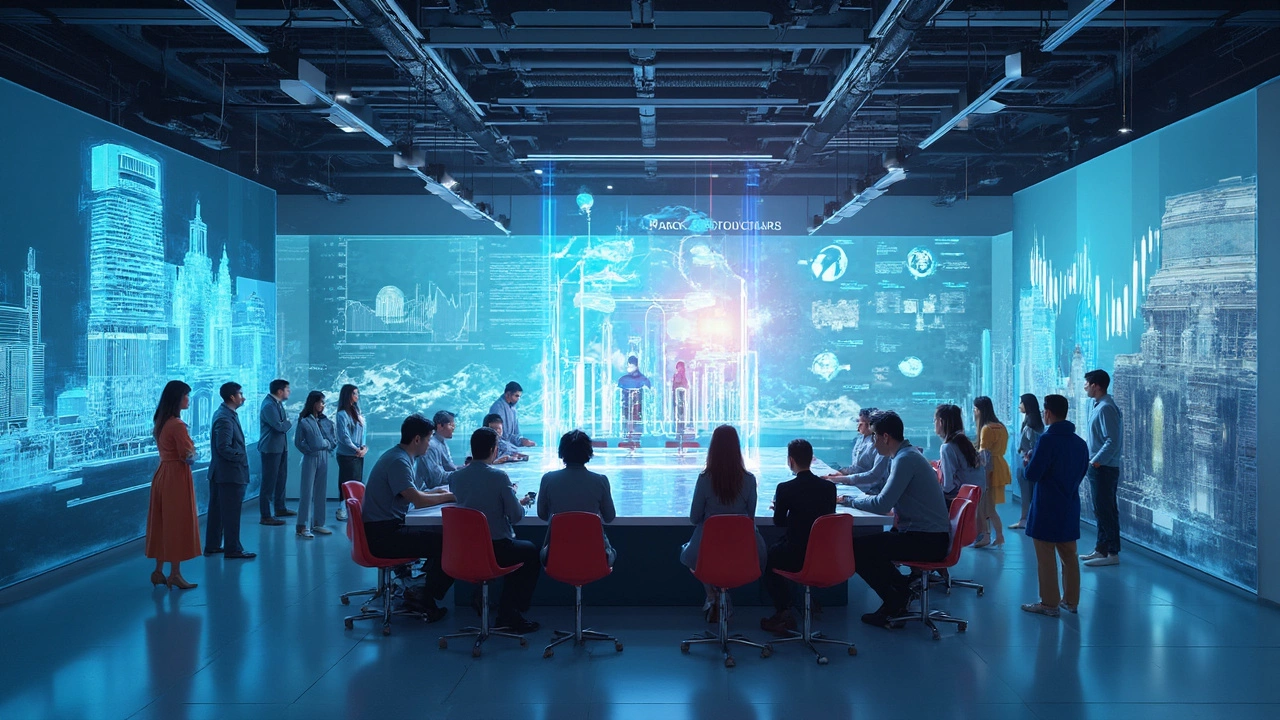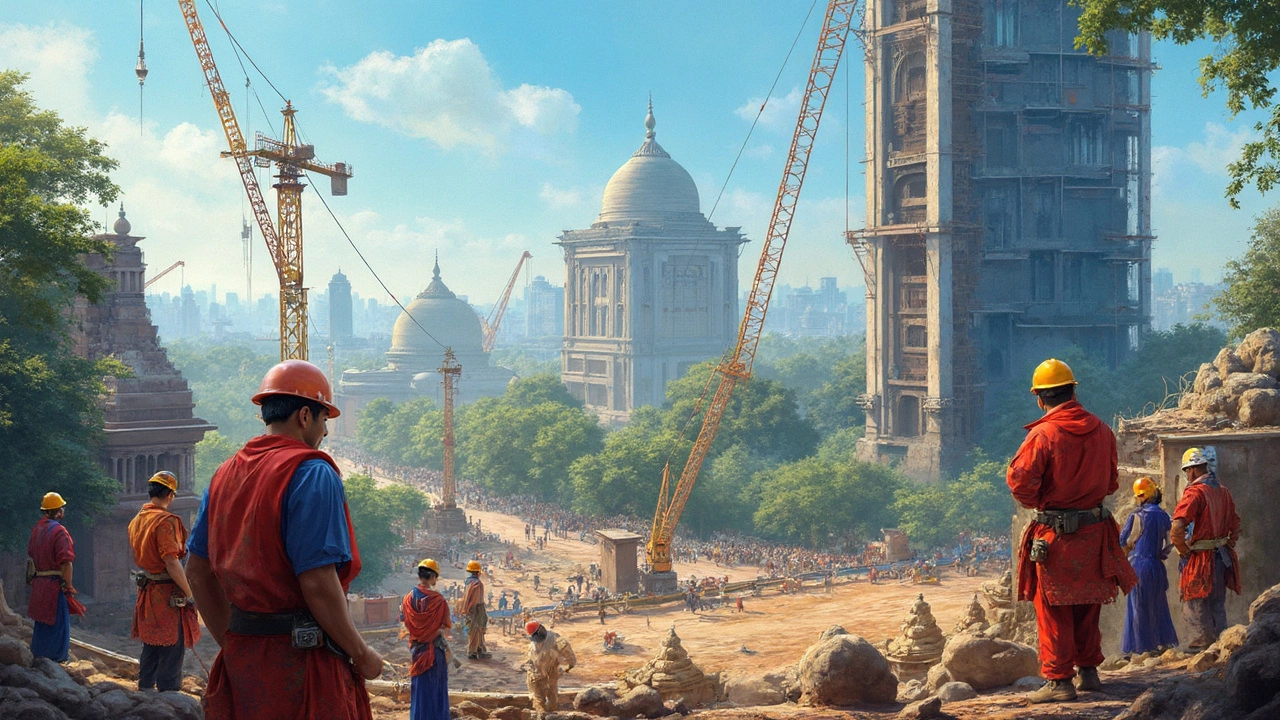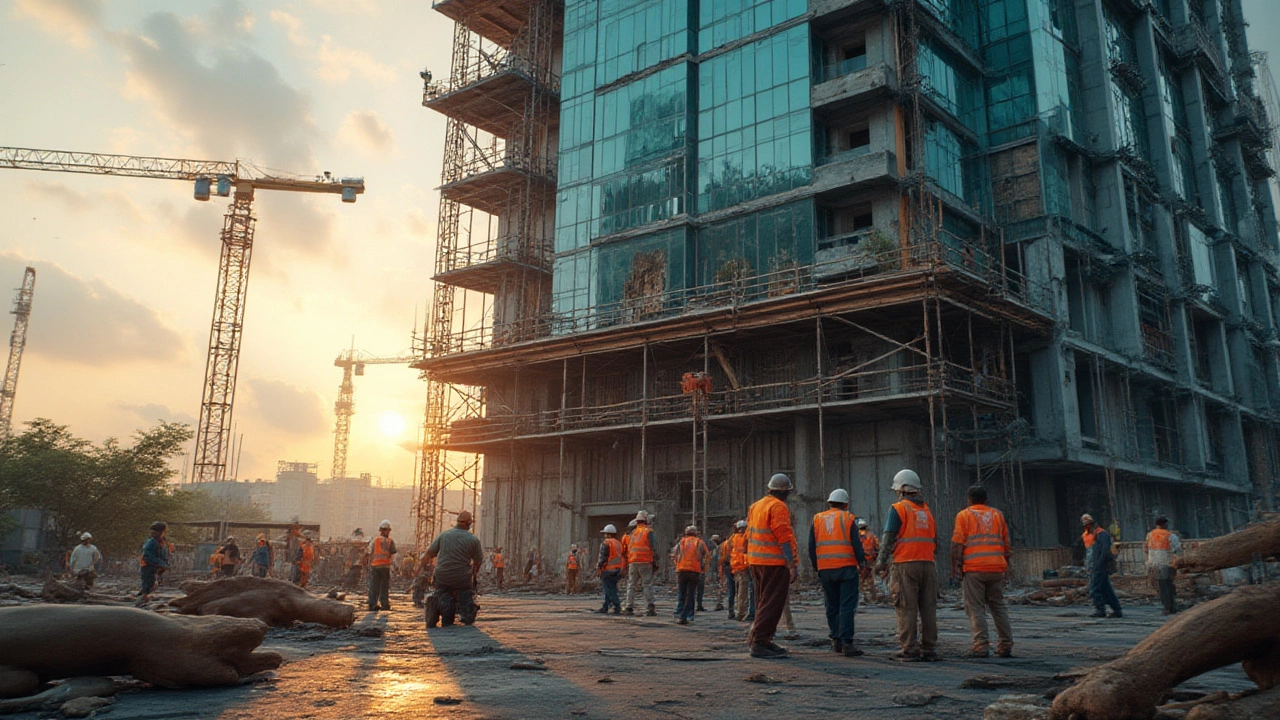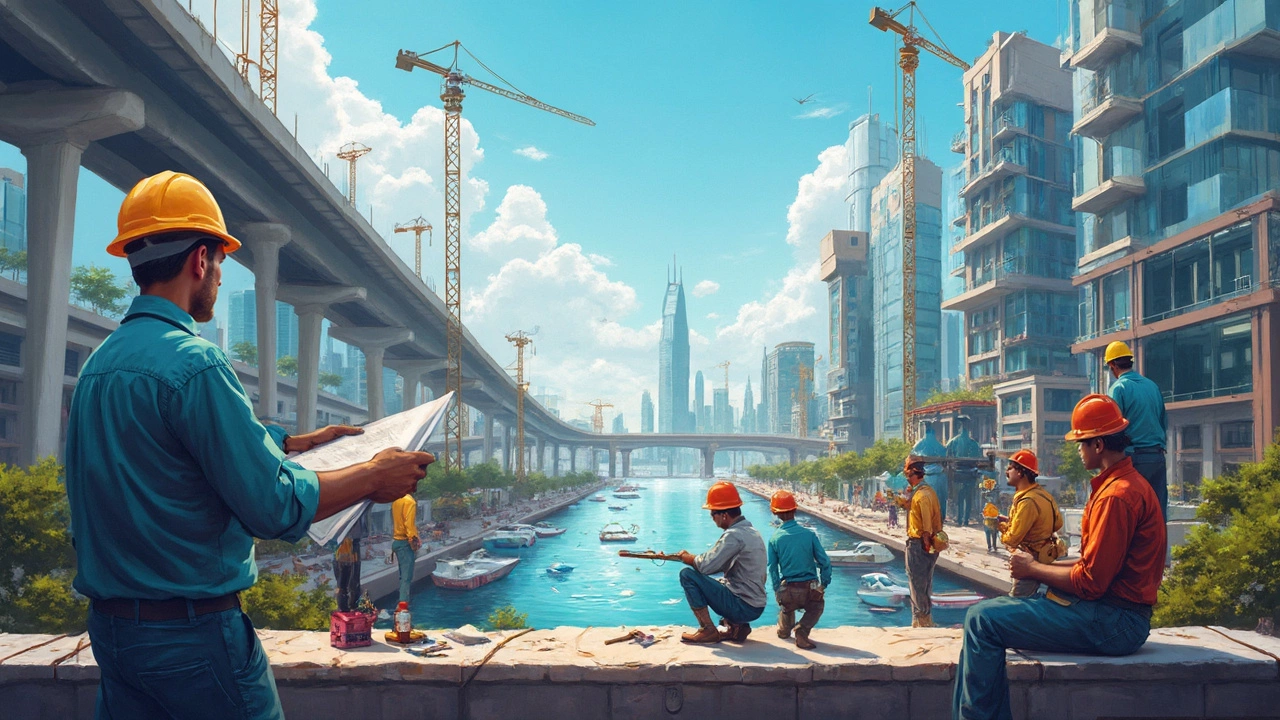Ever thought about what makes a building commercial? It's not just about skyscrapers reaching for the sky, but there's a whole bunch more to it. Commercial construction is all about spaces designed for business—that could mean your favorite coffee shop, a bustling office, or that massive shopping center you love exploring on weekends.
One thing that makes commercial construction stand out is its focus on serving loads of people daily. We're talking spaces built for functionality and flexibility. Imagine designing a space that has to handle not just today's demands but tomorrow's unexpected challenges and needs. That's where you start to see the difference.
Then, there are the little details that matter big time, like energy efficiency. It's not just cool buzzwords; it's about saving money and being kind to the planet. The materials used? They tell a part of the story too, with sustainability being key in today's projects.
- Understanding Commercial Construction
- Key Elements of Successful Projects
- Trends Driving the Industry
- Future of Commercial Spaces
Understanding Commercial Construction
When you hear the term commercial construction, it's easy to think it's just about building malls or office blocks. But there's more under the hood. We're talking construction that specifically caters to businesses, whether they're gigantic corporations or your local family-run store. The key is providing spaces that meet the needs of the business world, which are always changing in unexpected ways.
So, what sets commercial construction apart from residential building? First off, it deals with structures intended for public use and commercial activities. These can range from restaurants and retail spaces to sprawling warehouses and high-tech office complexes. The focus is on functionality, accessibility, and often, the latest tech to support businesses that are increasingly relying on modern solutions.
A standout feature of commercial construction is its adherence to a different set of regulations compared to residential buildings. These projects must comply with stricter building codes regarding safety, accessibility, and environmental impact. It's all about creating spaces that not only serve but also ensure the safety and comfort of the masses who occupy them daily.
One more thing: commercial projects often demand significant financial investment and meticulous planning. That's why they're usually handled by experienced developers and construction firms familiar with juggling cost, time, and quality to deliver spaces that meet both client expectations and regulatory standards. And since these buildings often house multiple companies or accommodate large crowds, the stakes are a bit higher.
In short, understanding commercial construction means stepping into the shoes of a business mastermind. It requires a mix of creativity, practicality, and a knack for seeing both the big picture and the tiniest details.
Key Elements of Successful Projects
Getting a commercial construction project right isn't just about having deep pockets or fancy architects on speed dial. It’s a blend of planning, people, and the right touch of technology. Let’s face it, nobody wants to walk into a building and think, 'Why did they do it like this?' Let's break down what makes these projects tick.
Firstly, you build it all on a solid foundation of planning and communication. Every stakeholder, from investors to contractors, needs to be on the same page from day one. You might have heard horror stories about budgets being blown out of the water. Good communication helps avoid these nightmares by setting clear expectations.
Next, let’s talk about functionality. A successful commercial construction project needs to serve its purpose efficiently, whether it’s an office building or a shopping center. This means thinking about everything from the layout down to the nitty-gritty of electrical outlets.
But hey, it's not just about getting the job done—it's also about innovation. You've got to stay ahead with the latest trends. Modern design elements like open spaces, lots of natural light, and even tech integration make a huge difference. For instance, think about automatic lighting that adjusts based on the time of day. That's both cool and practical.
- Energy Efficiency: Using materials and designs that reduce energy consumption is more than just good for the planet; it’s also cost-effective. Programs like LEED certifications are making their mark because they ensure buildings are up to the latest green standards.
- Safety First: No brainer, right? But it's surprising how many projects overlook this step. Safety protocols, regular inspections, and quality control should be the bread and butter of every site.
Finally, consider the long game—durability. Your project should withstand not just the test of structural integrity but also changing needs and trends. Opting for high-quality materials and keeping an adaptable design means fewer headaches down the road.
| Element | Description |
|---|---|
| Planning & Communication | Essential for project success and budget adherence. |
| Functionality | Ensures the building serves its intended purpose well. |
| Innovation | Involves implementing modern design and technologies. |
| Energy Efficiency | Focuses on reduced consumption through better design. |
| Safety | Critical throughout the construction process. |
| Durability | Important for long-term project success and adaptability. |
Whether you're wearing the contractor’s helmet or the investor’s shoes, nailing the basics of these elements means you're not just constructing a building—you're crafting a space where businesses thrive.

Trends Driving the Industry
The world of commercial construction is buzzing with new trends that are shaping the future of our spaces. One big thing that's hard to miss is the shift towards green buildings. Everyone's talking about it, and it's a trend that's not going away. Builders and developers are all in on eco-friendly designs and materials. This goes beyond just using recycled stuff; it's about creating buildings that are energy-efficient and sustainable over their lifetime.
Technology is also playing a huge role. Imagine having a digital twin of a building even before you lay the first brick. That's where things like Building Information Modeling (BIM) come in. BIM is like having a 3D blueprint that's smart and helps everyone involved—architects, engineers, and contractors—be on the same page and catch potential snags before they become headaches.
Modular construction is gaining serious traction too. It's all about building parts of a building off-site and then putting them together like a giant LEGO set on location. This trend saves time and can really help keep costs down. Plus, it's super flexible, allowing for quick changes if the project scope shifts.
Adaptive reuse is another buzzword you'll hear. Instead of knocking down old buildings, more and more companies are about transforming them into something new. Think of those cool loft-style apartments that used to be factories. This trend is economical and often a way to preserve history while meeting modern needs.
Let's toss in some numbers. In 2023, the global green building materials market was valued at approximately USD 280 billion. That's expected to grow like crazy, reaching USD 610 billion by 2030. If that doesn't show how much green construction is taking the spotlight, I don't know what does.
So, whether it's energy efficiency, modular designs, or tech collaborations, the commercial construction arena is a hotbed of innovation and forward-thinking solutions. It's not just about keeping up anymore; it's about building something that stands out and serves its purpose well into the future.
Future of Commercial Spaces
Thinking about the future of commercial construction is pretty exciting because it's going through some big changes. Technology and shifting needs are shaking things up, and we're all just trying to keep up. So, what's coming down the pipeline? Well, think smart buildings and green spaces in a whole new way.
Smart tech is leading the charge. Imagine buildings where lights adjust on their own or heating systems that learn your office's schedule. It’s happening! Smart sensors and the Internet of Things (IoT) are becoming standard, creating smart spaces that save energy, boost productivity, and can easily adapt to new needs.
And let's not forget sustainability. Commercial spaces are going greener than ever, not just because it's the right thing to do, but also because it makes economic sense. More businesses are seeking energy-efficient designs and materials. It’s not just about reducing carbon footprints—it’s about cutting down on those electricity bills, too.
Flexibility and openness are also on the rise. The demand for adaptable work environments is growing, fueled by the rise in remote working and changing business models. Offices with modular designs and adaptable layouts let companies shift gears quickly as their needs change.
Overall, the future of commercial spaces is looking to blend tech-savvy solutions with eco-friendly practices. Who knows, your next trip to the local shopping center might feel a bit like stepping into a sci-fi movie—or a greenhouse, for that matter. Either way, these spaces will be smarter, greener, and more adaptable, ensuring they stay relevant in our ever-changing world.
Take a look at this nifty table showing some potential tech and sustainable elements people are adopting in new commercial projects:
| Innovation | Description |
|---|---|
| Smart Sensors | Used for energy management and enhancing user comfort |
| Solar Panels | Provide renewable energy solutions, reducing costs |
| Adaptable Layouts | Allow spaces to be reconfigured easily to meet changing needs |



